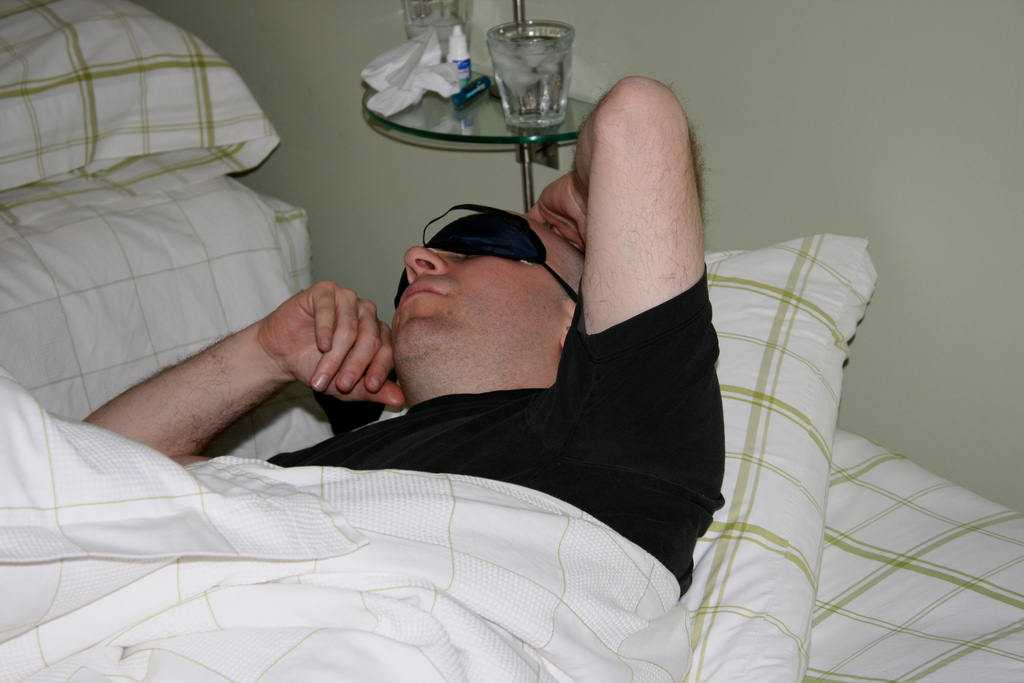 Snoring is more prevalent and has more potentially serious health side effects than most people realize. It is as much a lifestyle issue as it is a medical issue and can be successfully eliminated. Understanding what causes snoring is the first place to begin.
Snoring is more prevalent and has more potentially serious health side effects than most people realize. It is as much a lifestyle issue as it is a medical issue and can be successfully eliminated. Understanding what causes snoring is the first place to begin.
Why People Snore
Snoring occurs when the air passage is blocked enough to reduce the flow of oxygen to the body. The brain senses the drop in oxygen and wakes the body up. As a result, the body is unable to relax. Not surprisingly, most people do not hear themselves snore. The two most common symptoms of snoring disorders are feeling tired and exhausted, and drool on the snorer’s pillow in the morning.
The risk factors for snoring center around age as much as lifestyle:
- Statistically, 40% of men snore while only 25% of women do.
- Men over 40 years old are more likely to snore. As age increases, snoring becomes more prevalent; 1/3 of individuals between the ages of 55 and 84 snore.
- With respect to lifestyle, the most important finding is the overweight individuals are more likely to snore.
Medical Reasons for Snoring
Medically, there are two primary diagnoses for snoring: Bruxism and Apnea. Bruxism is defined as subconscious neuromuscular jaw clicking, jaw muscle tightening or teeth grinding during sleep that interferes with relaxation. Because it happens during sleep, only 5% of sufferers know they do it. The condition is sometimes the result of poor bite alignment It is treated by a dentist and usually involves the use of a fitted night guard. Dentists also recommend avoiding chewing gum.
Apnea is another cause for snoring and is a much more serious matter. Apnea can occur up to 30 times an hour and lead to major health problems including, heart attack, stroke, diabetes and heart failure. Simply stated, the brain and the heart are deprived of air.
There are two forms of apnea, Obstructive Sleep Apnea and Upper Airway Resistance Syndrome (UARS). The difference is in the duration of the airway blockage. The obstructive form interrupts sleep for over 10 seconds; UARS interruptions last for under 10 seconds. As many as 20 million people have a form of apnea — and 75% of them do not realize they have it. A sleep study is the most effective way to determine if a person has apnea.
Apnea can be cured. For many people the cure is as basic as making lifestyle changes. For more severe cases, a Continuous Positive Air Pressure (CPAP) device is effective. A CPAP is worn over the nose and provides a continuous flow of air. There are also several minimally invasive procedures that improve air flow.
Eliminate Snoring at Home
Snoring is unnecessary. There are several steps that can be taken at home to reduce — and stop — snoring. Many of these suggestions are surprisingly simple and logical:
First and foremost, lose weight. This has been proven to be a very successful strategy because it reduces fat around the neck that can constrict air passages.
Learn to consciously breathe through the nose. While it does take practice and concentration, it will help to improve the flow of air.
Use nose strips to keep the nasal passages open wider. Another suggestion is to use saline solution at bedtime to keep air passages moist.
Avoid eating food two hours before bedtime. One of the subtle sources of snoring is acid reflux that makes it hard for the body to relax. Also avoid alcohol three hours before going to since it relaxes the nose and throat muscles.
Sleep on the left side of the body. Studies show that the airways tend to be less restricted. Avoid sleeping on the back. This position tends to aggravate and cause snoring. As strange as it sounds, placing a tennis ball on the back alerts the brain when a person moves from the side to the back while sleeping. If you suffer from debilitating snoring or think you may have sleep apnea, we can help. Contact us today to learn more about treatment options for people suffering from debilitating snoring or sleep apnea.

